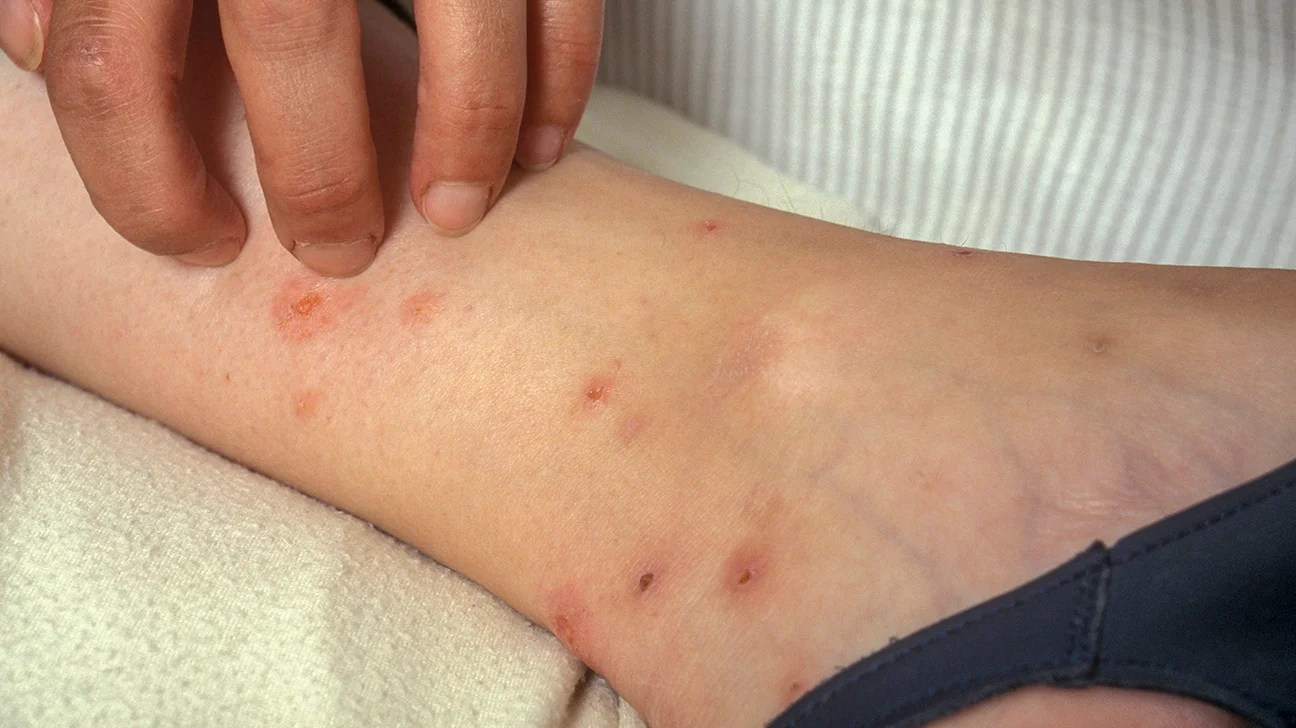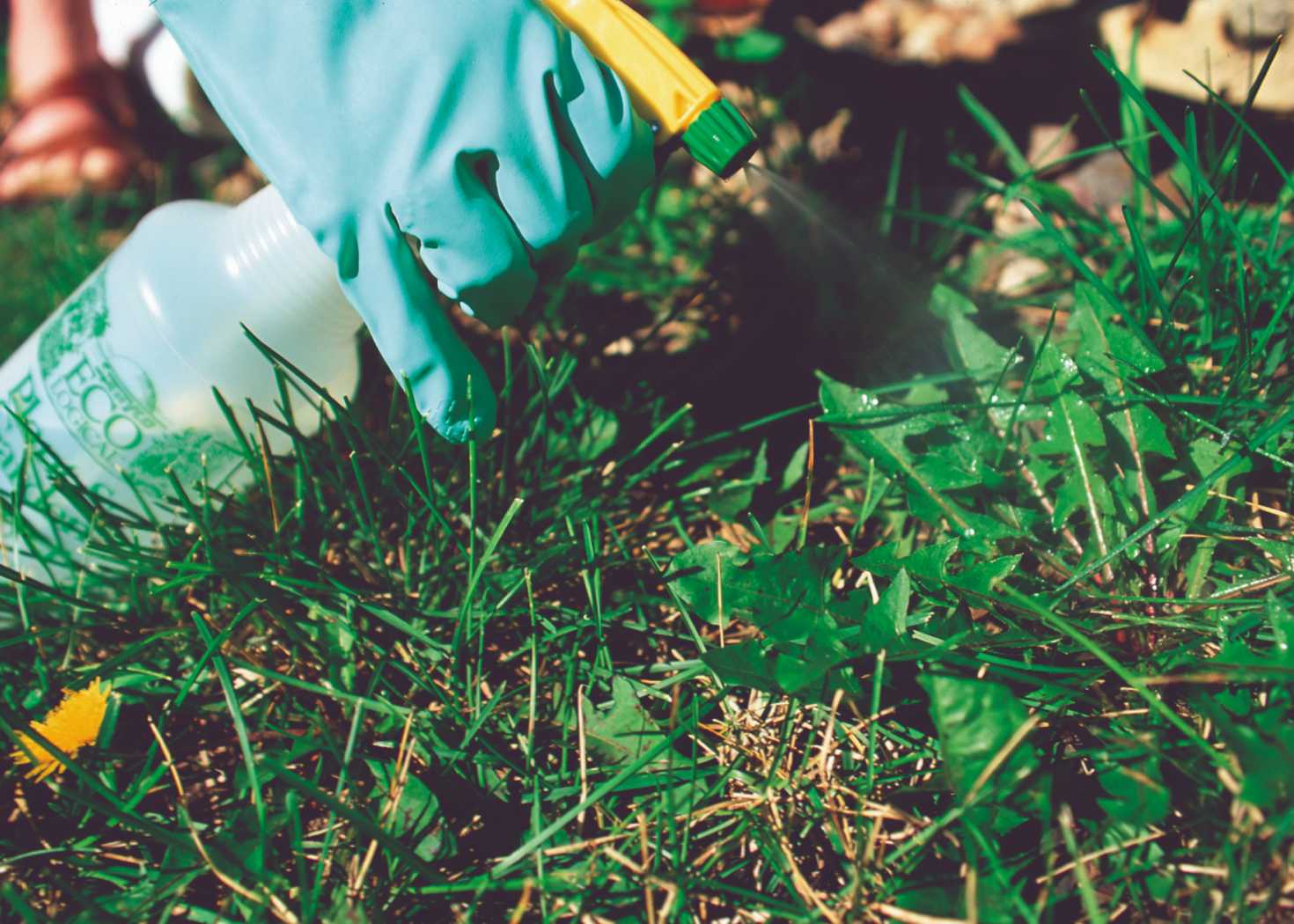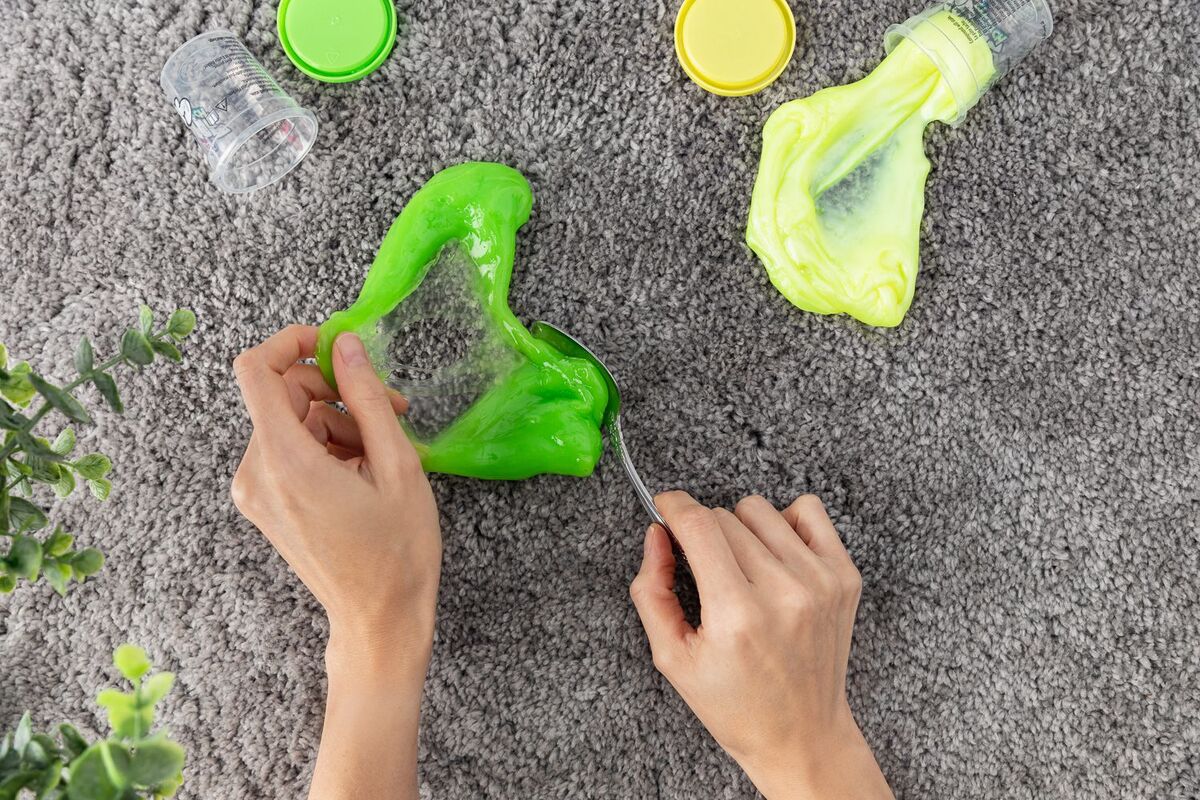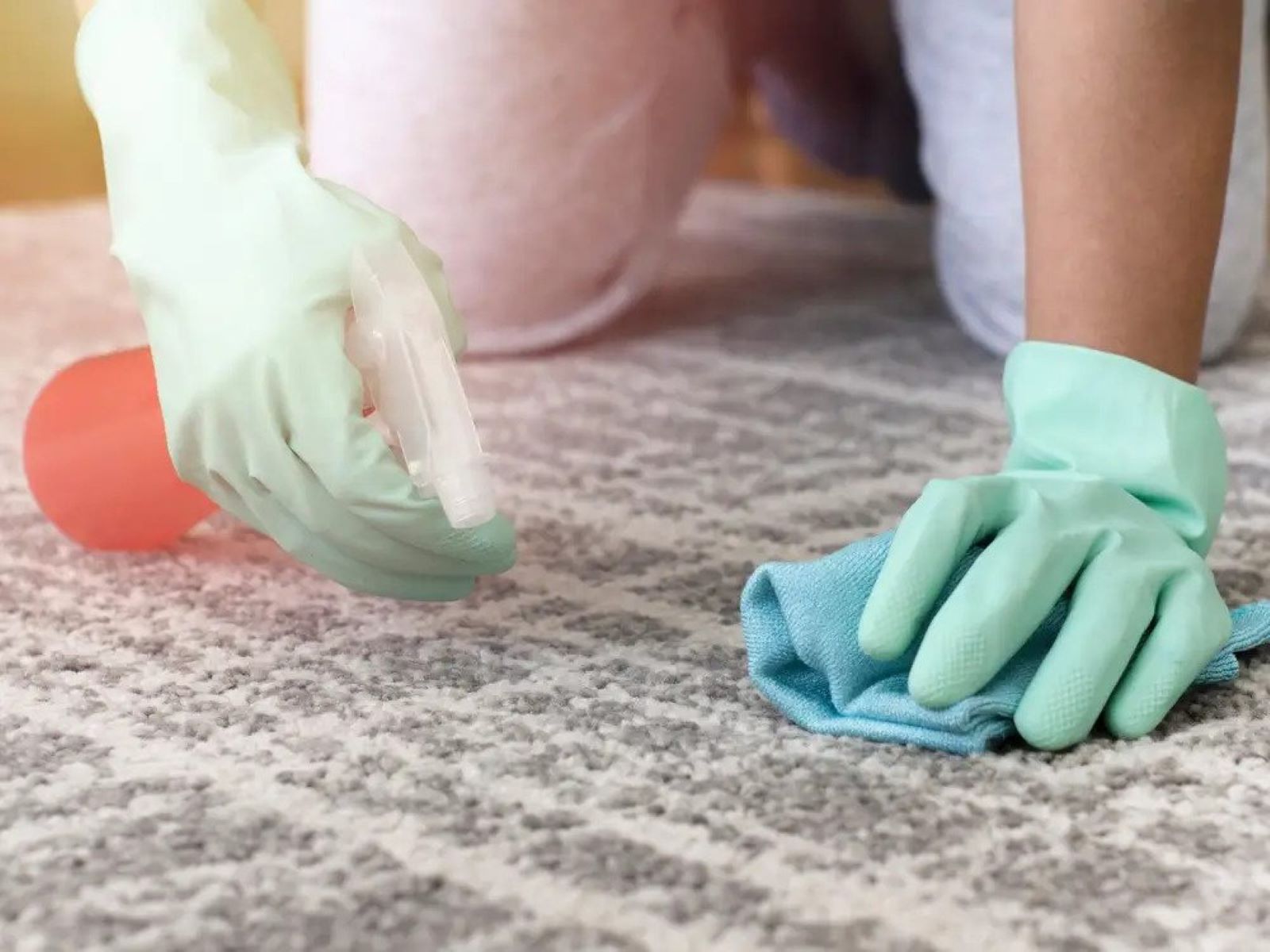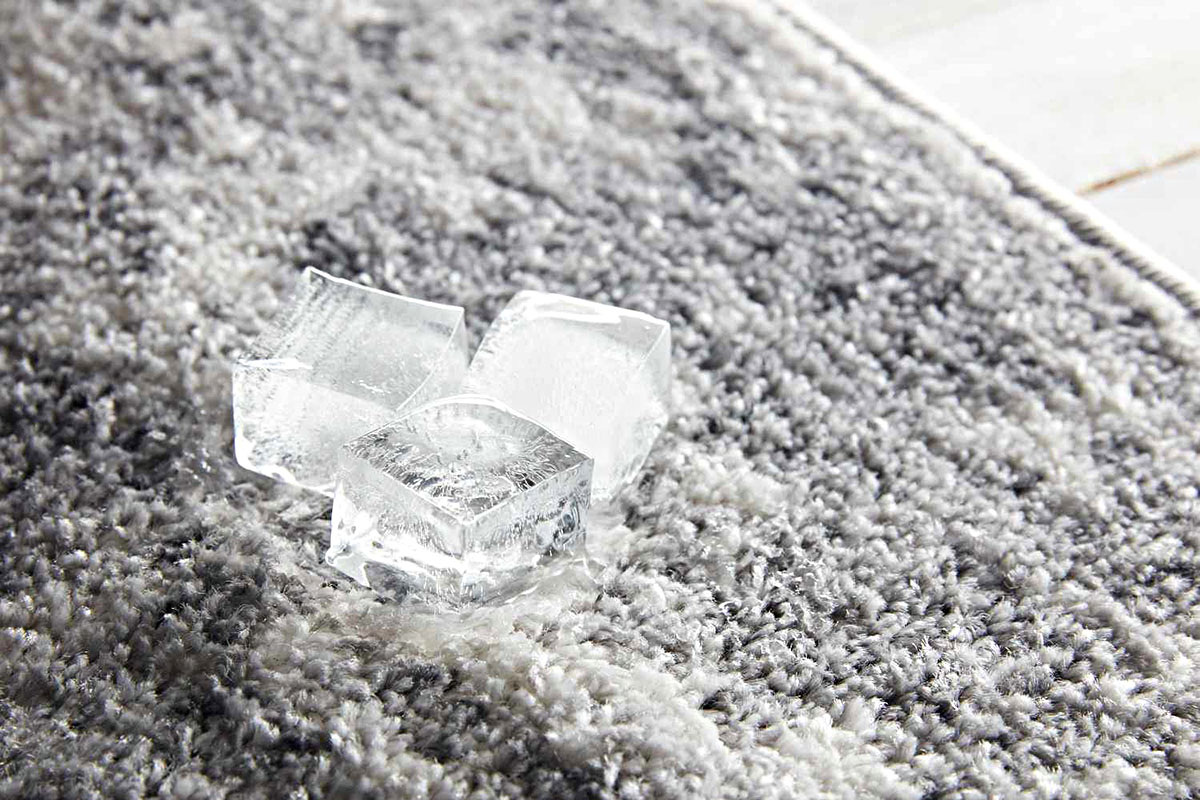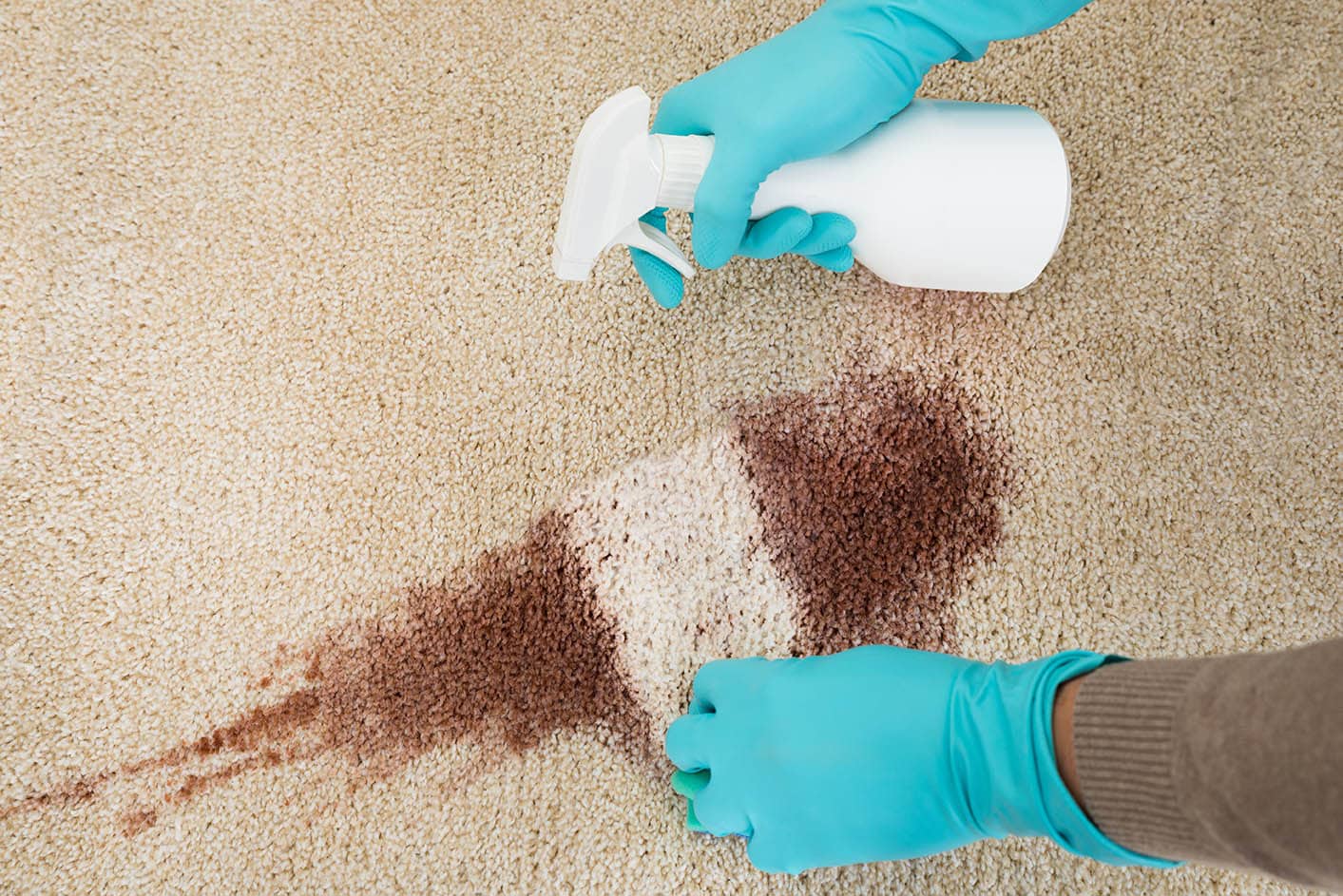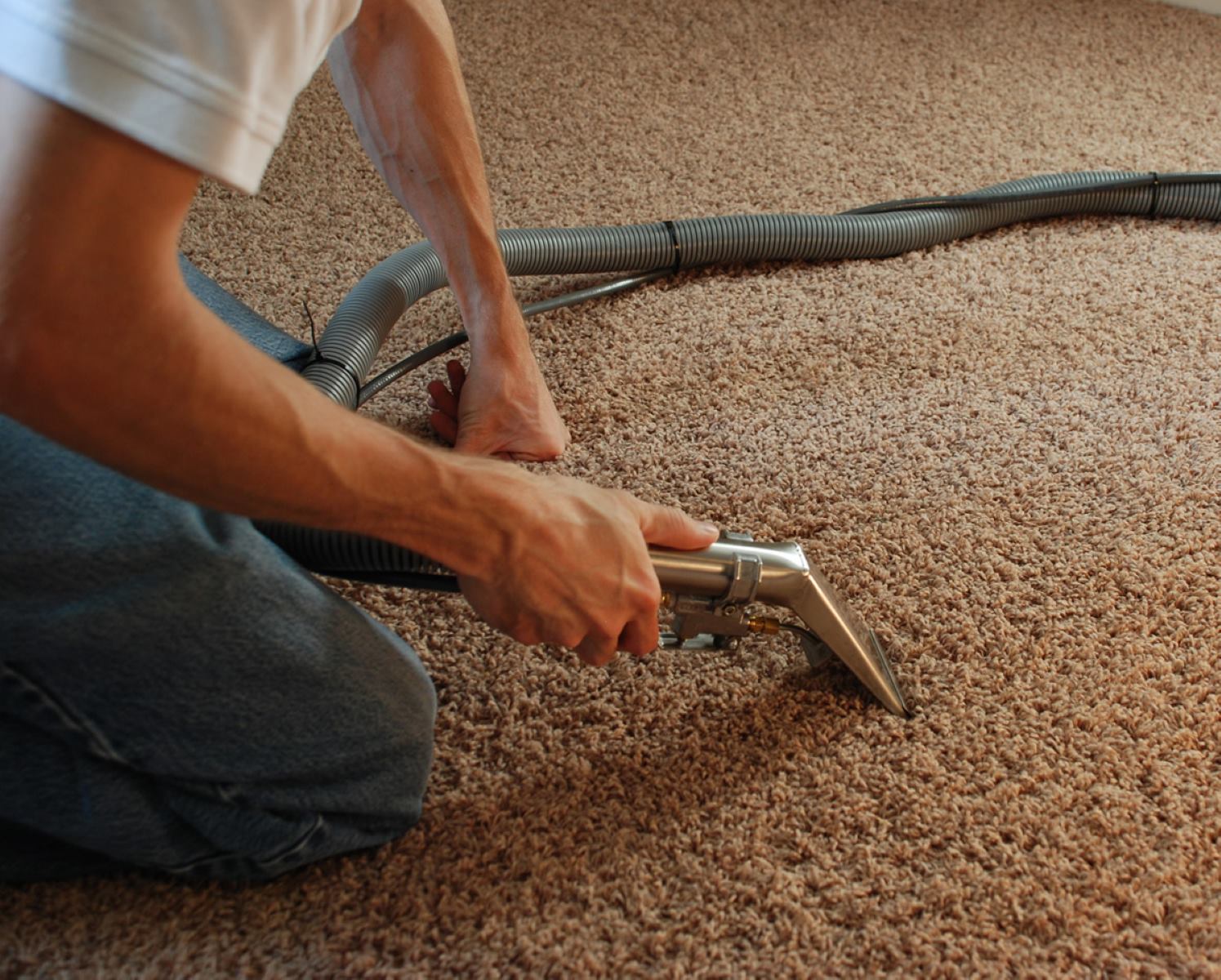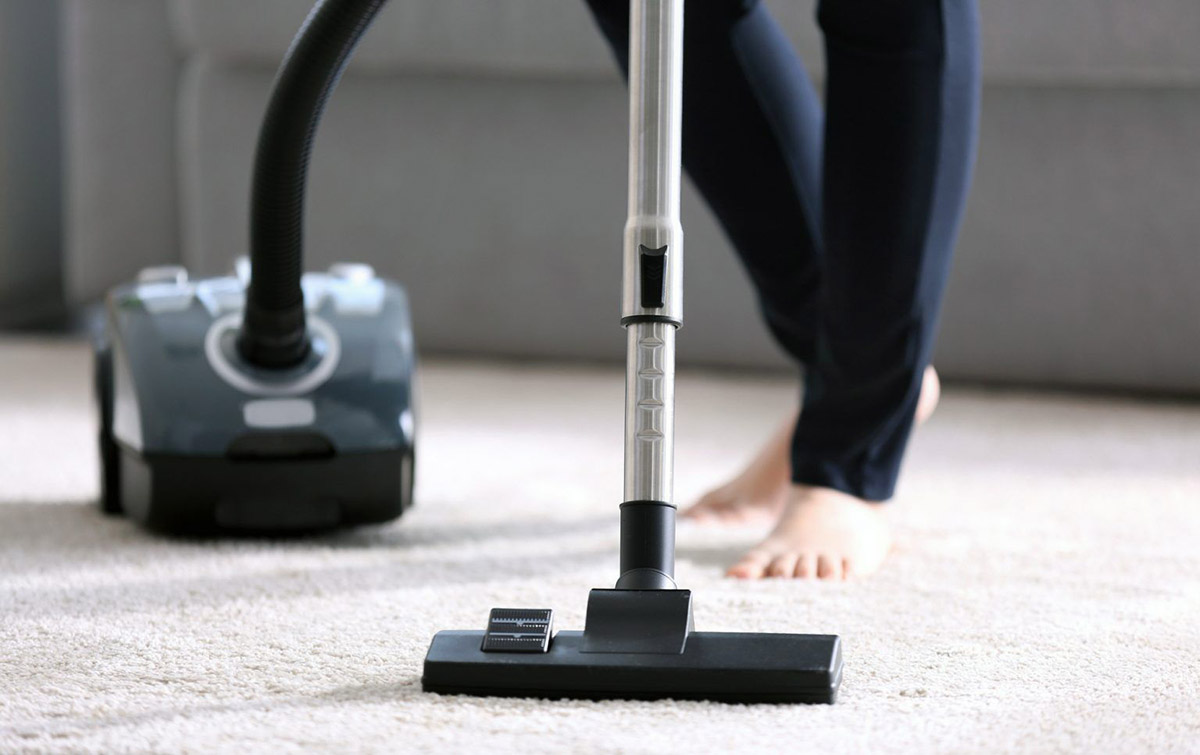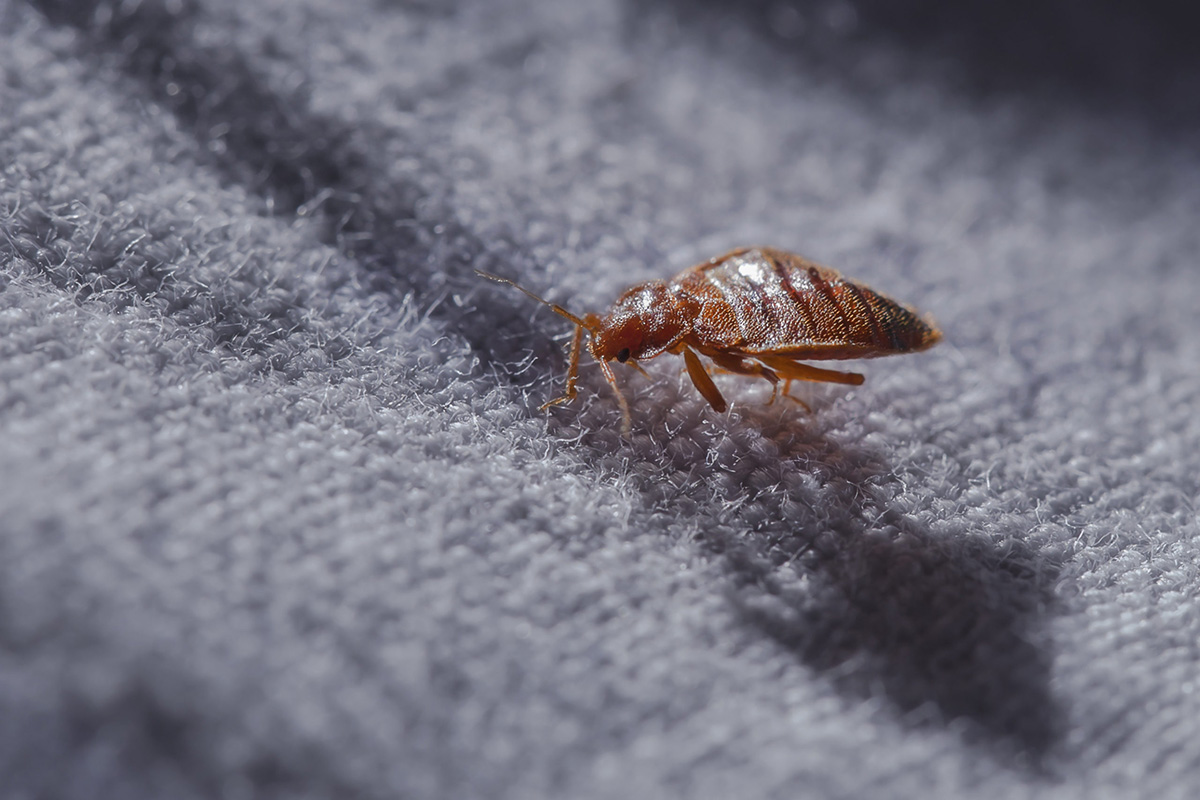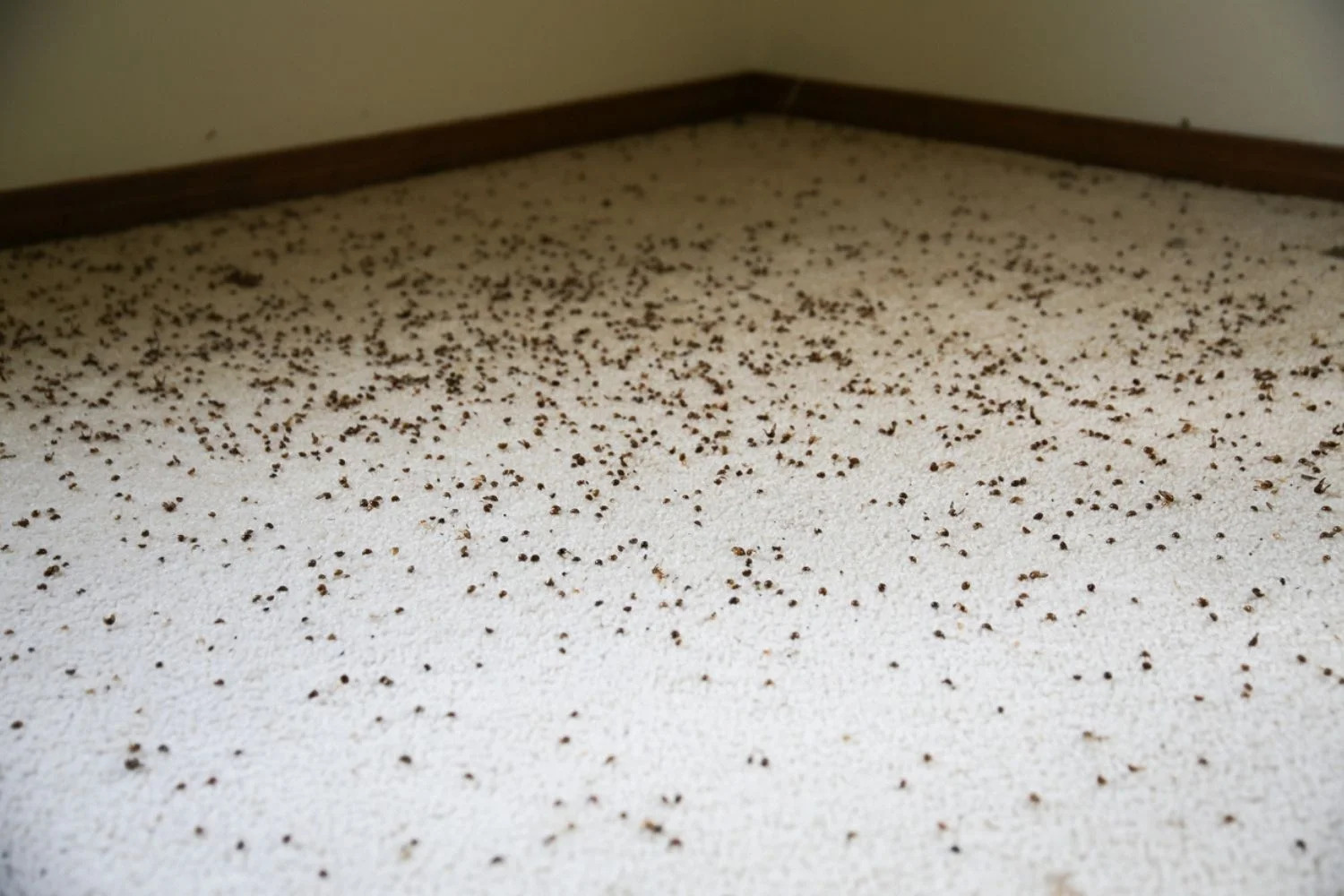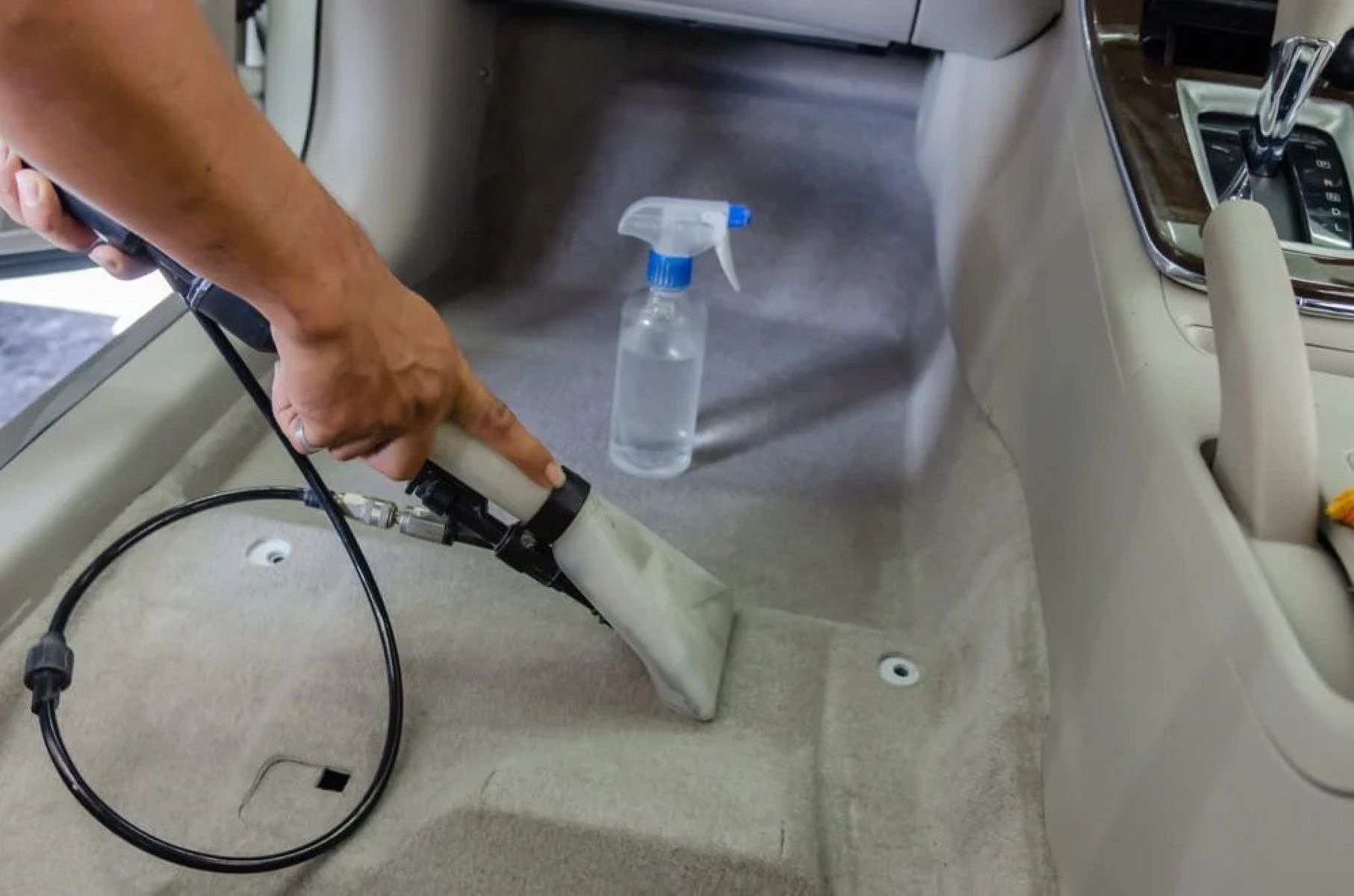

Articles
How To Get Rid Of Fleas On Carpet
Modified: August 28, 2024
Discover effective articles on how to eliminate fleas from your carpet. Get rid of pesky fleas and enjoy a clean, flea-free home.
(Many of the links in this article redirect to a specific reviewed product. Your purchase of these products through affiliate links helps to generate commission for Storables.com, at no extra cost. Learn more)
Introduction
In homes with pets, dealing with fleas can be a common and frustrating problem. Fleas not only bite and irritate both humans and animals, but they also reproduce quickly and can infest carpets, making it challenging to get rid of them completely. The carpet provides a perfect hiding place for fleas, as it offers warmth and protection.
Getting rid of fleas on carpet requires a comprehensive approach that targets both adult fleas and their eggs. There are various methods you can use to effectively eliminate fleas from your carpet, ranging from natural remedies to chemical treatments. In this article, we will discuss the best ways to get rid of fleas on carpet and provide you with actionable tips to prevent future infestations.
Before we delve into the different methods, it is important to understand the life cycle of fleas. Fleas go through four stages: egg, larva, pupa, and adult. Adult fleas lay their eggs on the host, which then fall off onto the carpet and other areas. The eggs hatch into larvae, which feed on organic matter such as flea feces and skin debris. The larvae then spin cocoons and enter the pupal stage. Finally, they emerge as adult fleas, ready to start the cycle all over again.
Now that you have a basic understanding of fleas and their life cycle, let’s move on to identifying signs of flea infestation on your carpet.
Key Takeaways:
- Understanding the behavior and life cycle of fleas is crucial for effective flea control on carpets. Identifying signs of infestation and preparing the carpet for treatment are essential steps in the process.
- Implementing preventive measures such as regular pet grooming, maintaining a clean home, and using protective barriers can significantly reduce the risk of future flea infestations on carpets. Consistency and vigilance are key to a flea-free home.
Read more: How To Get Rid Of Fleas In A Carpet
Understanding Fleas on Carpet
Fleas are small, wingless insects that thrive on the blood of animals, including cats, dogs, and even humans. While adult fleas typically reside on the host animal, they often lay their eggs on the carpet and other areas where pets spend a significant amount of time. Consequently, the carpet can become heavily infested with fleas, making it crucial to address the issue promptly.
Fleas on carpet can pose several problems. Firstly, their bites can cause itching and discomfort, leading pets to scratch incessantly. This can result in skin irritation, infections, and even hair loss. Additionally, fleas can transfer diseases between animals and humans, making effective flea control essential for the health and well-being of your family and pets.
When it comes to identifying fleas on your carpet, there are a few telltale signs to watch out for. One of the most obvious indicators is seeing adult fleas hopping around. They are typically reddish-brown in color and about the size of a pinhead. Flea eggs may also be visible as tiny white specks on the carpet fibers, resembling grains of salt.
Another sign of flea infestation is the presence of flea dirt, which is actually flea feces. Flea dirt looks like small black specks scattered throughout the carpet. To check if it’s flea dirt, you can place a damp white cloth or paper towel on the suspected area and press it firmly. If the black specks dissolve and leave behind reddish-brown residue, it’s likely flea dirt.
A common misconception is that fleas can only infest carpets in homes with pets. However, even if you don’t have pets, fleas can still enter your home through other means, such as on the clothes or shoes of visitors or on rodents that find their way inside. Once they establish themselves in the environment, fleas can breed rapidly, causing an infestation.
Understanding the behavior and habits of fleas on the carpet is crucial for effective flea control. By knowing their life cycle and how they infest your carpet, you can take the necessary steps to eliminate them and prevent future infestations. With this knowledge, let’s move on to preparing your carpet for flea treatment.
Identifying Flea Infestation
Identifying a flea infestation in your home is the first step towards getting rid of them. While fleas are tiny and can be difficult to spot, their presence can be detected through various signs and indicators. By paying attention to these signs, you can quickly determine whether or not you have a flea problem in your home.
One of the most obvious signs of a flea infestation is the presence of pets scratching excessively. Flea bites can cause itching and discomfort, leading animals to scratch their bodies vigorously. If you notice your pets scratching more than usual, especially around their head, neck, and base of the tail, it may indicate a flea infestation on their bodies or in your home.
In addition to excessive scratching, you may also observe small red bumps or bite marks on your pet’s skin. Scrutinize their fur and skin closely for signs of fleas or their droppings. Flea droppings, also known as flea dirt, are small black specks that resemble ground pepper. You can differentiate flea dirt from normal dirt by placing it on a damp white tissue or paper towel. If it turns red or brown, it is likely flea droppings.
Another way to identify a flea infestation is by examining your carpet for fleas or their eggs. Adult fleas are tiny, reddish-brown insects that move quickly and can be challenging to catch. However, using a flea comb on your pet’s fur can help you spot adult fleas. As for flea eggs, they are tiny white specks that resemble grains of sand and can be found in the carpet fibers.
Apart from observing your pets and inspecting your carpet, there are other signs to look out for that may indicate a flea infestation. One such sign is the presence of itchy red bumps or bites on your own body. If you’re being bitten by fleas, it’s likely that they have infested your home.
Fleas are attracted to warmth, so areas where your pets spend a lot of time, such as their beds or favorite spots on the carpet, are prime locations for flea activity. Check these areas thoroughly for signs of fleas, including flea dirt or actual fleas hopping around.
It’s important to note that fleas can multiply rapidly, with each adult flea laying hundreds of eggs during their lifespan. Therefore, if you notice any signs of flea infestation, it’s crucial to take immediate action to prevent the problem from worsening.
Now that you can identify the signs of flea infestation, let’s move on to preparing your carpet for effective flea treatment.
Preparing the Carpet for Treatment
Before tackling a flea infestation on your carpet, it’s important to take some necessary steps to prepare the area for treatment. By doing so, you can maximize the effectiveness of the flea removal methods and ensure the safety of your pets and family members.
The first step in preparing your carpet for treatment is to clear the area of any obstacles. Remove all furniture, toys, and other items from the carpeted areas to expose as much of the carpet as possible. This will allow the treatment to penetrate deep into the fibers and reach the hidden flea eggs and larvae.
Next, thoroughly vacuum the entire carpeted area. Use a vacuum cleaner with strong suction and a brush attachment to effectively remove flea eggs, larvae, and adult fleas. Pay special attention to areas where your pets spend a lot of time or where you’ve noticed higher flea activity. Vacuuming helps to physically eliminate a significant number of fleas and their life stages, reducing the overall population.
After vacuuming, seal the contents of the vacuum bag or canister in a plastic bag and dispose of it immediately. This helps to prevent any surviving fleas from reinfesting your home.
Once the carpet is clear and has been vacuumed, consider applying a flea powder or insecticide specifically designed for flea control. These products can help kill fleas at different stages of their life cycle and provide residual protection against future infestations.
When using chemical products, it’s crucial to carefully read and follow the instructions provided by the manufacturer. Wear protective gloves and ensure proper ventilation while applying the treatment to avoid any potential harm to yourself or your pets.
If you prefer natural remedies, there are several options available. Diatomaceous earth, for example, is a non-toxic powder made from fossilized aquatic organisms. It works by physically dehydrating and killing fleas, making it a safe and effective natural solution for flea control on carpets.
Remember, thorough preparation is key to successful flea treatment on your carpet. By clearing the area, vacuuming thoroughly, and considering the use of flea control products, you can create an optimal environment for eliminating fleas and preventing their return.
Now that your carpet is prepared, it’s time to explore natural remedies for removing fleas from your carpet.
Natural Remedies for Flea Removal
If you prefer to take a more natural approach to flea removal, there are several effective remedies that can help get rid of fleas from your carpet. These natural methods are safe for both your pets and your family, and they provide an alternative to chemical treatments.
1. Salt
One natural remedy for eliminating fleas on carpet is using salt. Sprinkle fine table salt evenly over the infested areas and leave it overnight. The salt acts as a dehydration agent, causing the fleas to dry out and die. Vacuum the carpet thoroughly the next day to remove the dead fleas and salt.
2. Baking Soda
Baking soda is another effective natural remedy for flea removal. Sprinkle baking soda liberally over the carpet and brush it into the fibers. Leave it for a few hours or overnight to dehydrate the fleas. Vacuum the carpet thoroughly to remove the baking soda and the dead fleas.
3. Essential Oils
Certain essential oils, such as lavender, peppermint, and eucalyptus oil, can repel and kill fleas. Mix a few drops of the chosen essential oil with water in a spray bottle and generously spray the carpeted areas. Allow the carpet to air dry. Repeat this process regularly to keep fleas at bay.
4. Herbal Flea Sprays
You can also create a herbal flea spray by boiling fresh herbs such as rosemary, thyme, and chamomile in water. Allow the mixture to cool and strain it into a spray bottle. Spray the herbal mixture onto the carpet, paying attention to the areas where fleas are commonly found. The natural compounds in the herbs repel and kill fleas.
5. Flea-Repelling Plants
Planting flea-repelling plants around your home can help deter fleas from entering. Examples of such plants include lavender, mint, rosemary, and marigold. Their natural scents repel fleas and make it less likely for them to infest your carpet.
While these natural remedies can be effective, it’s important to note that they may not completely eliminate a heavy infestation. It’s worthwhile to combine these methods with other flea control measures to ensure thorough flea removal.
In the next section, we will explore the option of using chemical treatments to eliminate fleas from your carpet.
Vacuum your carpet thoroughly and regularly to remove flea eggs and larvae. Use a flea spray or powder specifically designed for carpets to kill adult fleas and prevent re-infestation.
Read more: How To Get Rid Of Fleas In Furniture
Using Chemical Treatments to Eliminate Fleas
If natural remedies have not been effective in eliminating the flea infestation on your carpet, or if you are dealing with a severe infestation, chemical treatments can be an option to consider. There are various flea control products available in the market that can effectively kill fleas and prevent their return. Here are some commonly used chemical treatments:
1. Flea Sprays
Flea sprays are available in both aerosol and pump bottles. They contain insecticides that kill fleas on contact. Before applying the spray, remove all pets, children, and food from the area. Thoroughly read and follow the instructions on the product, and ensure proper ventilation while applying the spray. It’s important to cover all areas of the carpet, paying close attention to high flea activity areas.
2. Flea Foggers
Also known as flea bombs, flea foggers are aerosol cans that release a fog of insecticide into the room. Foggers are effective in treating large areas and reaching hidden areas where fleas may be hiding. Before using a flea fogger, follow the instructions carefully, evacuate the room, and cover or remove all exposed food and aquariums.
3. Carpet Powders
Carpet powders are typically applied by sprinkling them evenly over the carpet. The powder penetrates the carpet fibers and kills fleas by contact or ingestion. Allow the powder to sit for a specified amount of time, usually a few hours, and then thoroughly vacuum the carpet to remove dead fleas and the powder residue.
4. Insect Growth Regulators (IGRs)
IGRs are chemicals designed to target the life cycle of fleas. They inhibit the growth and development of flea eggs, larvae, and pupae, preventing them from reaching adulthood. IGRs are available in different forms, including sprays, powder, and spot-on treatments. They can be used in conjunction with other flea control methods for effective long-term prevention.
It’s important to note that when using chemical treatments, always follow the instructions provided by the manufacturer. Use the recommended amount and avoid over-application, as excessive use of chemicals can be harmful to pets and family members. Keep in mind that chemical treatments should be used as part of a comprehensive flea control plan and combined with proper carpet cleaning and regular vacuuming.
In the next section, we will discuss the importance of vacuuming and cleaning your carpet in the flea removal process.
Vacuuming and Cleaning the Carpet
Vacuuming and cleaning your carpet is a crucial step in the flea removal process. It not only helps to physically remove fleas, eggs, and larvae but also eliminates their hiding places and reduces the overall flea population in your home. Here are some important tips to keep in mind:
1. Vacuuming
Regular vacuuming is one of the most effective ways to control fleas on your carpet. Use a vacuum cleaner with strong suction and a brush attachment to thoroughly vacuum all areas of the carpet, including corners, edges, and under furniture. Pay special attention to areas where your pets spend a lot of time. Fleas and their eggs often accumulate in these areas.
When vacuuming, make sure to move the vacuum slowly to allow it to pick up as much debris as possible. Repeat the process several times, going over each section of the carpet from different directions. This will help to dislodge fleas that may be hiding deep within the carpet fibers.
2. Dispose of Vacuum Waste Properly
After vacuuming, it’s important to properly dispose of the vacuum waste to prevent fleas from reinfesting your home. Seal the contents of the vacuum bag or canister in a plastic bag and dispose of it immediately in an outdoor trash container. This will prevent any surviving fleas, eggs, or larvae from escaping and infesting other areas of your home.
3. Steam Cleaning
Steam cleaning your carpet can be an effective way to kill fleas and their eggs. The high temperature of the steam helps to eliminate fleas at all stages of their life cycle. It’s recommended to use a steam cleaner specifically designed for carpets and follow the manufacturer’s instructions for best results. Steam cleaning can be particularly useful for tackling a heavy infestation.
4. Hot Water Extraction
Hot water extraction, also known as carpet shampooing, can be another effective method to remove fleas from your carpet. This method involves using a carpet cleaning machine that dispenses hot water and cleaning solution onto the carpet, followed by a powerful suction to extract the solution along with debris and fleas. It’s important to use a carpet cleaning product specifically formulated to kill fleas.
Regular vacuuming and cleaning should be performed not only during an active flea infestation but also as a preventative measure to avoid future infestations. By keeping your carpet clean and free from debris, you can minimize the risk of fleas establishing themselves in your home.
In the next section, we will discuss important tips for preventing future flea infestations on your carpet.
Preventing Future Flea Infestations
After successfully eliminating fleas from your carpet, it’s important to take proactive steps to prevent future infestations. By implementing preventive measures, you can minimize the risk of fleas returning and ensure the long-term cleanliness of your carpet. Here are some essential tips to consider:
1. Regular Pet Grooming and Flea Prevention
Keep your pets on a regular grooming and flea prevention regimen. Regularly bathe them using a pet-friendly flea shampoo and use flea control products recommended by your veterinarian. These preventive measures can help ensure that your pets remain free from fleas, reducing the chances of introducing fleas into your home.
2. Treat Pets’ Bedding and Sleeping Areas
Wash your pets’ bedding frequently in hot water to kill any fleas or eggs that may be present. It’s also important to regularly vacuum and clean their sleeping areas. Fleas often spend a significant amount of time in these areas, so keeping them clean and flea-free will help prevent infestations on the carpet.
3. Maintain a Clean and Clutter-Free Home
Regularly clean your home, including vacuuming carpets, curtains, and upholstery, as well as sweeping and mopping hard floors. Pay attention to areas where pets spend time, such as their favorite spots on the carpet. Remove clutter and debris from your home, as fleas can hide in these areas.
4. Protective Barriers and Encasements
Create a barrier between your pets and potential flea-infested areas by using protective encasements on their beds. These encasements can help prevent fleas from entering the bedding and breeding. Additionally, consider using flea collars or treating your pets with spot-on treatments that provide ongoing protection against fleas.
5. Outdoor Flea Control
Keep your outdoor environment well-maintained to minimize sources of fleas. Trim your lawn regularly, remove debris and leaf litter, and keep the areas around your home free from tall grass and brush. Consider using outdoor flea control products in areas where your pets spend time.
6. Regular Carpet Maintenance
Maintain regular carpet cleaning and maintenance to keep it clean and flea-free. Vacuum your carpet regularly, at least once a week, using a vacuum cleaner with strong suction power. This will help remove any flea eggs, larvae, or adult fleas that may have been carried into your home.
By following these preventive measures consistently, you can significantly reduce the risk of future flea infestations on your carpet. It’s important to remember that regular maintenance and vigilance are key to keeping your home flea-free and maintaining a clean environment.
Now that you are equipped with these prevention tips, you can ensure the long-term flea control on your carpet and enjoy a pest-free home.
Remember, if you suspect a severe infestation or are unsure how to proceed, it’s always a good idea to consult with a professional pest control expert.
If you found this article helpful, please share it with others who may be dealing with flea issues in their homes. Together, we can eliminate fleas and create a healthier, happier living environment.
Wishing you success in your flea control efforts and a flea-free home!
Conclusion
Dealing with a flea infestation on your carpet can be a frustrating experience, but with the right knowledge and tools, it is possible to effectively eliminate fleas and prevent future infestations. By understanding the behavior of fleas and their life cycle, you can better identify signs of infestation and take immediate action.
Whether you choose to use natural remedies or chemical treatments, preparing your carpet for treatment is an essential step. Clearing the area, vacuuming thoroughly, and considering the use of flea control products will create an optimal environment for flea removal.
While natural remedies can be effective, sometimes chemical treatments may be necessary, especially for severe infestations. Flea sprays, foggers, and carpet powders can provide targeted and immediate results.
Regardless of the method you choose, regular vacuuming and cleaning of your carpet are vital for flea control. Vacuuming not only physically removes fleas and their life stages but also helps eliminate their hiding places.
To prevent future flea infestations, implement measures such as regular pet grooming and flea prevention, treating pets’ bedding and sleeping areas, maintaining a clean and clutter-free home, using protective barriers and encasements, and practicing outdoor flea control.
Remember, consistency is key. By implementing these preventive measures and staying vigilant, you can enjoy a flea-free home and maintain the cleanliness of your carpet.
If you need further assistance or have a severe infestation, don’t hesitate to consult with a professional pest control expert who can provide expert guidance and support.
With proper knowledge and proactive flea control measures, you can successfully eliminate fleas from your carpet and create a healthier and pest-free living environment for you and your family.
Best of luck in your flea control endeavors, and may your home be forever free from fleas!
Now that you've tackled fleas on carpets, keep your home spotless with our guide on carpet cleaning, ideal for maintaining freshness and hygiene. Additionally, if you're dealing with other unwanted guests, learn effective pest control techniques to handle pantry moths. Both articles offer practical advice and solutions tailored for any household looking to uphold a clean and pest-free environment.
Frequently Asked Questions about How To Get Rid Of Fleas On Carpet
Was this page helpful?
At Storables.com, we guarantee accurate and reliable information. Our content, validated by Expert Board Contributors, is crafted following stringent Editorial Policies. We're committed to providing you with well-researched, expert-backed insights for all your informational needs.

